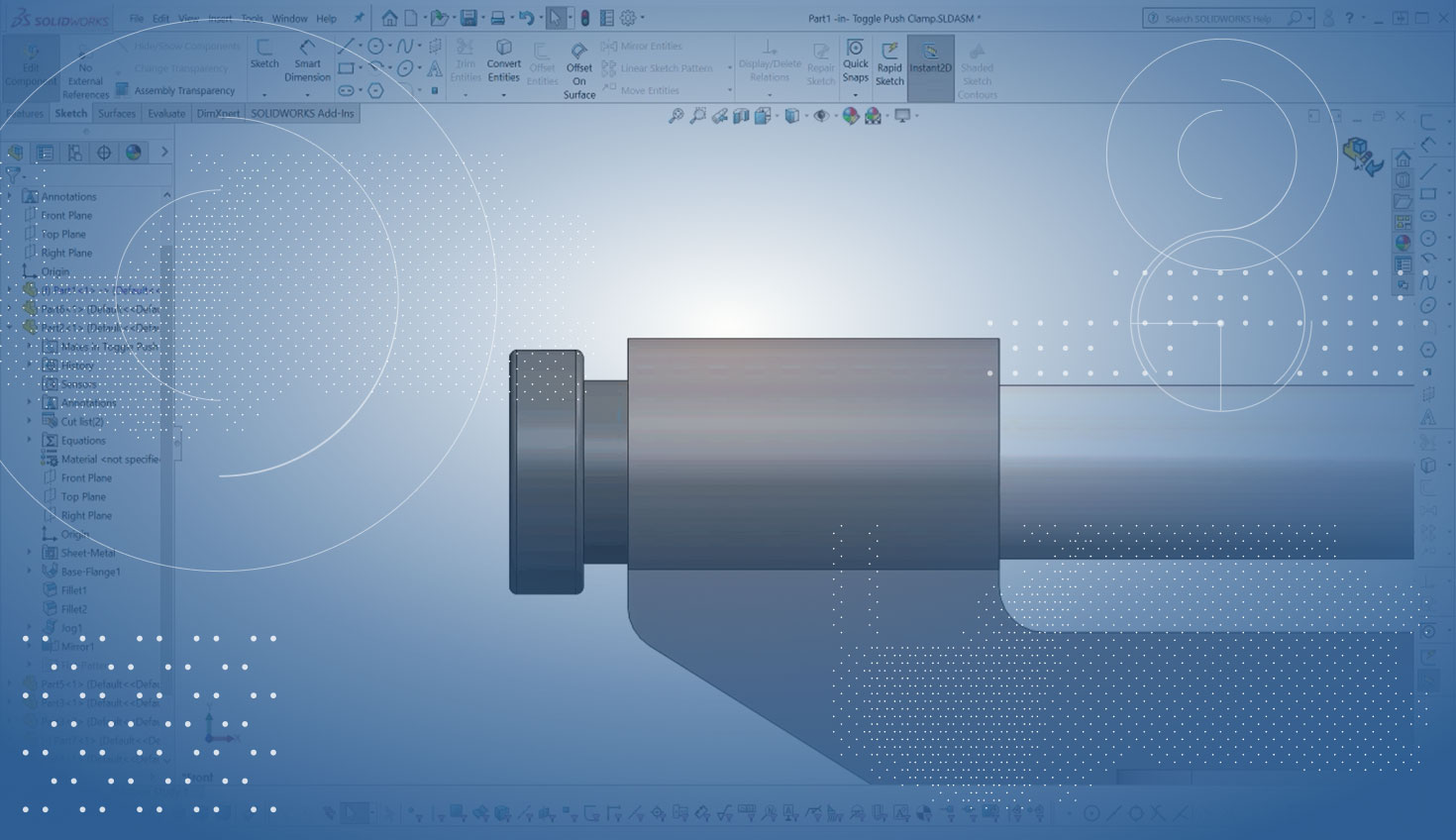Designing in-context in old CAD systems is fraught with error. Simple things like moving parts in your assembly will cause your design to update in unpredictable ways.
In the animation above, you can see that a simple movement, such as testing the range of motion of a clamp, will cause the design to update in an unexpected way. You’ll notice that the frame of the clamp changes after a simple movement of the handle, even though this was not the engineer’s intention.
But updating geometry in unpredictable ways isn’t the only problem. Because old CAD systems are dependent on files, either moving, renaming or deleting those files has a domino effect that can cause the entire assembly to fail to rebuild. We often hear horror stories from engineers whose assemblies opened “blank.” In fact, in many organizations the practice of in-context design is either banned, or the references must be broken before a design can be released. It is such a troublesome feature that some old CAD systems even have an option disabling it altogether.
So how does Onshape solve these problems?
Onshape’s Managed In-Context Design tools capture a snapshot of the assembly. Then they bring that snapshot into the Part Studio so that you can work around it.
The key difference here is the snapshot you created is immutable. Meaning that it is a view-only moment in time that is not susceptible to unpredictable updates or references being changed/moved/deleted. This is only possible because of Onshape’s modern cloud-based architecture.
With Onshape, you control when and how your design updates.
Interested in learning more about the advantages of Onshape’s Managed In-Context Design tools? Join me at our webinar tomorrow.
